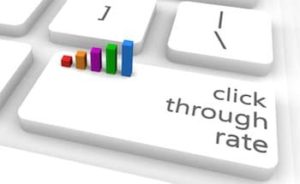Google Ad Label Changed Again: Why You Need to Keep Up
 Here’s where a rational marketing mind might wonder: “Exactly WHY should I care that Google has—yet again—changed the “Ad label" at the top of search results?” To the casual observer, it seems to be a subtle change—from yellow versions to a solid green background, to (now) a green outline with a white background.
Here’s where a rational marketing mind might wonder: “Exactly WHY should I care that Google has—yet again—changed the “Ad label" at the top of search results?” To the casual observer, it seems to be a subtle change—from yellow versions to a solid green background, to (now) a green outline with a white background.

Is this a seemingly insignificant change simply to help distinguish paid ads from organic listings?
Nope. Here’s why this subtle and ho-hum change is definitely significant, and actually important info for marketing professionals. (Keep your finger on this pulse. The game changes often.)
This is Google. There’s no discounting the influence of anything that the dominant search engine giant does. In part, that’s one of the reasons that Healthcare Success is a Google Certified Partner, specialized in Search ads, Mobile ads and Display ads.
User improvements. Yes, The search industry leader has been known to tinker with potential improvements. This is the seventh change in roughly seven years. But the small things that Google does ultimately improve the quality of search results, benefits the user and influences the search industry.
Reduces mobile-user friction. An earlier Ad label test and change (from yellow to green) proved to be a boost to mobile users and devices. It reduced the number of colors in play on a mobile page, and reduced friction for the “always-in-a-hurry” mobile user device user.
And if you’re able to keep up with Google changes and small screen user actions (including shorter attention spans), ad and marketing planners to may need to revise creative strategies.
Ads compliment organic. The appearance is visually appealing, and search users can clearly distinguish the paid ads from the organic search results. That said, a user benefit is that paid listings are somewhat similar in appearance to organic listings. Thus, advertised and brand names appear as an appealing option for some search users, while the organic results may be the best solution for others.
CTR for ads is stronger. Perhaps the most significant difference with this little graphic adjustment is that online media professionals are seeing a dramatic improvement in advertising Click-Through Rate. (CTR – a percentage; the number of clicks on an ad divided by the number of ad impressions.)
Are you staying current with digital changes?
Frankly, keeping pace with Google’s constant changes and improvements is tough. What’s more, for competitive reasons, the Internet search engine is deliberately quiet about their plans. There's good reason to reach out to us. We have the professional credentials and expertise to keep you digitally current and your online presence working effectively. Click through here. It’s remarkably easy to connect with us and schedule an appointment today.









